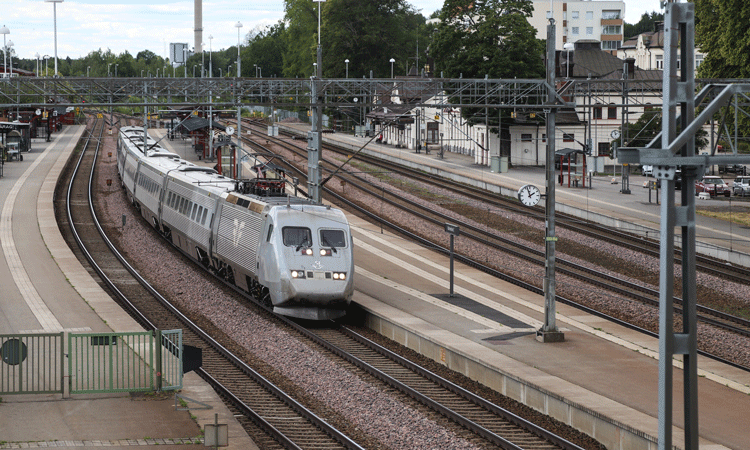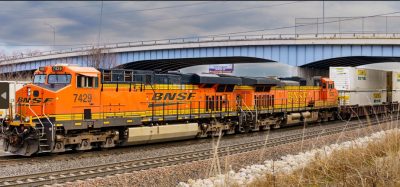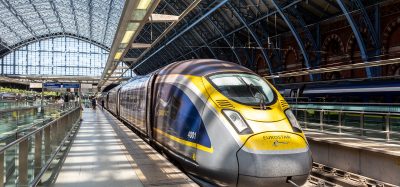The future of high-speed rail in Sweden
Posted: 1 October 2015 | | No comments yet
Within a foreseeable future, Sweden will have its first high-speed railway, writes Stefan Engdahl, Director of Market and Planning at the Swedish Transport Administration (Trafikverket). After years of discussions and investigations, there is now wide majority support for a large investment, which also includes new housing and improved public transport. This will be the largest infrastructure project conducted in Sweden in a generation: a society transformation as great as when the main lines were drawn through the country in the 1800s. The overall descriptions of the upcoming investment into a high-speed railway between the metropolitan regions of Sweden indicate a great boost for Swedish infrastructure. The goal is for these high-speed railways to be completed around 2035.


Travel times will be significantly shortened – which is one of the explicit gains of this initiative. The end goal is to make it possible to travel between Stockholm and Gothenburg in two hours, and between Stockholm and Malmö in two and a half hours. At the same time, capacity on the existing main lines will be freed-up for freight transportation.
The new high-speed railway requires new technology and a new construction standard, which allows a maximum speed of 320km/h. There are many challenges ahead. In addition to the new technology in regard to the construction, a new type of vehicle will be required; one which can drive at such a high-speed while still maintaining comfort and operational reliability.
Parts of these new railways are already well underway in terms of planning, such as the Gothenburg–Borås route and the ‘Eastern Link’ between Järna and Linköping. The Swedish Transport Administration is also currently investigating alternative routes between Linköping–Borås and Jönköping–Malmö. Later in the autumn, the Swedish Transport Administration will present its collective assessment of social effects and benefits, and hand this over to the National Negotiation on Housing and Infrastructure which has been commissioned to provide a final proposal to the government regarding routes, stations and funding.
It will not be possible to construct the high-speed railway in the same manner that the existing railway was built. The curves cannot be as sharp, and it requires a different structural strength. One alternative could be to build parts of the railway on raised bridges to reduce the barrier effect, but this is something that has only been done in Japan and China so far. These countries have chosen this option primarily because it is cheaper; the method entails that soil consolidation is only required beneath the bridge abutments and not the entire railway embankment. Building the railway on raised bridges also reduces the need for fencing and special solutions for road crossings.
The collective investment also entails an increase in housing construction in the three metropolitan regions of Stockholm, Gothenburg and Malmö, improved public transport in the cities, better bike paths and a new link to Denmark. It will significantly increase accessibility and make it easier to travel between different cities for housing, studies and work. Investigating a future high-speed railway in Sweden is not a new task for the Swedish Transport Administration. The former Swedish Rail Administration received the first such commission from the government in 1993: Create a rough outline for a future high-speed network.
In the first half of the 1990s, the Swedish Rail Administration was involved in an adaptation of the Southern Main Line that would allow trains to drive at 200km/h. They negotiated with land owners and municipalities about replacing level crossings with bridges. At the time, the talk of a high-speed railway was only seen as disruptive to that planning process.
But now a broad investigation base is available, and knowledge has been obtained from France, Germany, Spain, Italy and Japan, among other sources. These countries built their high-speed railways for different purposes, and they have also had to deal with different challenges during the planning and construction stages – Japan has to give significantly more thought to earthquakes than Sweden does, for example.
The existing main lines are currently being used for mixed traffic. Long-distance trains share the line with regional, commuter and freight trains. The capacity is limited, and the system is all too sensitive to disruptions. After studying a number of alternative solutions, the Swedish Transport Administration has chosen to continue planning a more or less separate system for high-speed trains. This means that it will be possible to use the existing lines for regional, commuter and freight transport more effectively, aiming for a higher level of punctuality.
The new separate high-speed railway will be used for express regional trains and high-speed trains travelling at the maximum speed possible on the track. The traffic prognoses produced by the Swedish Transport Administration are based on two and, in the long-term, three departures per hour towards Gothenburg and Malmö throughout most of the day. This is fewer departures than today, but as the new trains will be more than twice as long as the current trains, they will not need to make as many trips.
There is an intense investigatory and fact-collecting effort underway in 2015. The Swedish Transport Administration is conducting a long line of investigations of technical and socioeconomic aspects on behalf of the National Negotiation on Housing and Infrastructure. In 2016, the current fact collection phase will enter into a negotiating phase, which will led by the negotiators assigned by the government. They will negotiate a final proposal with municipalities and regions, which is to be completed in the autumn of 2017. The business sector and other stakeholders will also have the opportunity to influence the outcome.
Everyone benefits from Sweden’s investment in a modern railway network. Since the entire railway system is integrated, the new high-speed railways will relieve the system and improve its capacity. Efficient travel and transport options are beneficial to the labour market and growth in the whole country. The ongoing investigatory work has already shown that the positive impact of the new high-speed railways will not be limited to long-distance journeys. The regional train traffic will also be improved. One clear example is the travel time between Gothenburg and Borås, which will be cut in half, down to 30 minutes. That route is currently the third largest commuter route in Sweden, with journeys going in both directions as many of the commuters work in Gothenburg, while both the university and the centre of the fashion and textile industry are located in Borås. Plans are currently underway for this route, and one important question is where to place the station in Borås?
Once negotiations have been completed in 2017, agreements will have been made between the state, regions, municipalities and businesses. These agreements will provide answers regarding who is funding what – both in terms of infrastructure in the metropolitan areas and the new high-speed railways, how the expansion of these high-speed railways will be executed and where the housing will be constructed. The works will then proceed into new phases of planning, design and construction. And in 20 years, we can all reap the benefits.
Biography
Stefan Engdahl is Director of Market and Planning at the Swedish Transport Administration (Trafikverket), with overhead responsibility for long-term planning of the transport system for road, rail, shipping and aviation. He is also Chairman of The Swedish Construction Clients – an association for professional construction clients who develop properties and build for long-term ownership and management. Other assignments include as Vice Chairman of IQS, an association working for progress within construction of society and as a Member of The Royal Swedish Academy of Engineering Sciences (IVA). Stefan holds an MSc as well as a Lic Sc in Civil Engineering.








